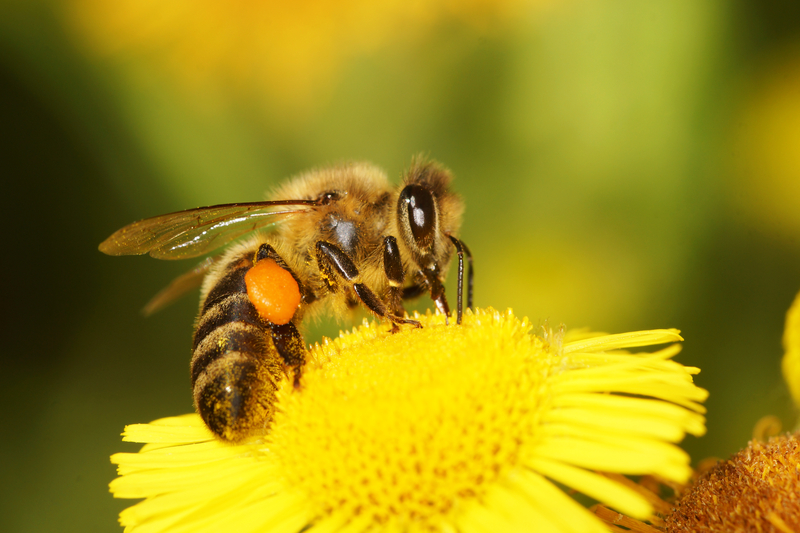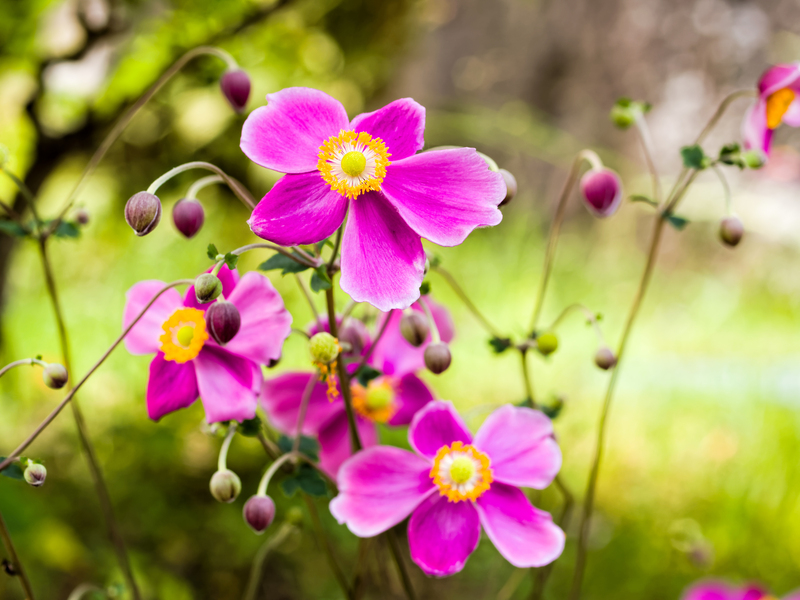Cold Weather Champions: The Key to Safeguarding Your Garden Plants
Posted on 26/05/2025
Cold Weather Champions: The Key to Safeguarding Your Garden Plants
As the seasons shift and the crisp bite of cold weather sets in, dedicated gardeners face a crucial task: protecting their precious plants. Whether it's unexpected frosts or long, harsh winters, understanding how to safeguard your garden plants is essential for year-round beauty and bounty. In this comprehensive guide, discover how cold weather champions--from plant varieties to strategic techniques--can help you preserve and even thrive in your garden when temperatures plummet.
Understanding the Threat: How Cold Weather Impacts Your Garden
From root to bloom, frigid temperatures can be devastating to your plants. Cold weather gardening is much more than simply hoping your plants survive; it's a proactive approach rooted in knowledge and preparedness. Let's explore the key challenges:
- Frost Damage: Sudden cold snaps can kill tender foliage, causing blackened leaves, wilted stems, and even plant death.
- Soil Freezing: When soil freezes, roots are unable to absorb water and nutrients effectively--a critical risk for many garden plants.
- Dehydration: While it seems counterintuitive, winter air is often dry, and frozen ground limits water uptake, stressing plants.
- Windburn: Icy winds strip away moisture from leaves, increasing the likelihood of desiccation and browning.
Becoming familiar with these risks empowers you to choose the best cold weather protection strategies and identify hardy plant varieties for your region.

Choosing Cold Weather Champions: Plants That Stand Up to Frost
The best way to achieve a resilient winter garden is to select and cultivate cold-tolerant plants. These are species naturally adapted to chilly climates, displaying features like thickened leaves, anti-freeze sap, or deep root systems. Here are some top contenders for your winter garden:
1. Winter Vegetables: Greens That Love the Cold
- Kale: Notoriously tough, kale's flavor actually sweetens after frost exposure.
- Spinach: A rapid grower that can survive hard frosts, perfect for late-fall or early-spring harvests.
- Swiss Chard: Thrives in chilly temps, offering vibrant color and nutrition long past the first frost.
- Brussels Sprouts: The ultimate winter vegetable, requiring frosty nights to develop their best flavor.
2. Hardy Perennials: Ornamental Champions
- Hostas: These garden classics die back but reliably return each spring, surviving through frozen winters.
- Daylilies: Their roots hold strong underground even when the air temperature plummets.
- Peonies: Dormant during winter, peonies are true cold-weather garden champions for long-term beauty.
- Irises: Many iris varieties are bred for cold weather, providing early-spring blooms as a reward.
3. Cold-Tolerant Shrubs and Trees
- Boxwood: This evergreen shrub holds its foliage and color even in snow, offering year-round structure.
- Red Twig Dogwood: Not only hardy, but it adds striking color to winter landscapes.
- Holly: With its festive berries and rugged leaves, holly tolerates freezing temperatures beautifully.
- Juniper: Particularly resilient, junipers provide shelter and interest through harsh weather.
Tip: When selecting winter-hardy plants, always check your USDA Hardiness Zone to choose species best suited for your local climate!
Proven Strategies for Protecting Your Garden Plants in Cold Weather
While planting cold-tolerant specimens is the foundation, every garden can benefit from cold weather protection techniques to shield vulnerable plants. Below, explore actionable steps to safeguard your garden in even the harshest winter weather:
1. Mulching -- Nature's Blanket
Mulch creates an insulating layer atop the soil, protecting roots from rapid temperature swings and moisture loss. Try these tips:
- Apply 2-4 inches of organic mulch--like straw, wood chips, or shredded leaves--around plants but avoid direct contact with stems.
- For extra cold snaps, double-layer the mulch to maximize protection.
- Refresh your mulch in late autumn, just before the ground freezes, for best results.
2. Row Covers and Cloches -- Physical Barriers to Frost
Row covers and cloches act as cold weather shields for delicate plants.
- Fleece, fabric, or specialty row cover material traps warmth while allowing moisture and light to penetrate.
- Plastic tunnels or hoop houses work well for vegetables and low-growing plants.
- Cloches--individual plant domes--protect seedlings and small crops from sudden cold snaps.
3. Watering Wisely
Water is a surprisingly crucial winter garden champion. Well-hydrated plants withstand cold better:
- Water deeply ahead of cold weather; moist soil retains warmth longer than dry soil.
- Water in the morning so excess moisture evaporates, reducing the risk of ice forming on leaves overnight.
4. Windbreaks for Shelter
Installing windbreaks--such as garden fencing, burlap screens, or even temporary reed mats--can shield susceptible plants from dehydrating winter winds:
- Position windbreaks on the north and west sides of your garden where prevailing gusts are strongest.
- Use evergreen shrubs or hedges as living windbreaks for long-term garden protection.
5. Pruning and Plant Care
Late-fall pruning helps your plants focus on root and stem health, rather than tender new growth susceptible to frost:
- Remove dead, diseased, or weak wood, especially from shrubs and perennials.
- For roses and hydrangeas, leave some stem length to protect against die-back.
- Avoid heavy pruning right before winter--new growth is most frost prone.
6. Soil Amendments and Fertilization
Feeding your soil, rather than just your plants, prepares your garden for cold:
- Apply compost or organic matter to boost soil health and microbial activity.
- Skip quick-release fertilizers late in the season to avoid stimulating tender late growth.
Cold Weather Crop Rotation and Succession Planting
Keep your garden productive and protected with savvy planting strategies that create natural defenses against cold.
- Rotate crops -- Especially in the vegetable patch, rotating planting locations breaks pest cycles and supports soil health, which improves cold tolerance.
- Succession planting -- Stagger your sowing schedule to ensure a steady supply of produce and flowers, even as temperatures fluctuate.
Leveraging Containers and Raised Beds for Winter Protection
Container gardening and raised beds offer extra flexibility and protection for cold-sensitive plants:
- Containers can be moved to sheltered locations (like a garage, shed, or enclosed porch) when severe weather strikes.
- Raised beds warm up faster in spring and drain better, reducing the risk of root rot or ice damage.
- Consider insulating raised beds with straw bales or foam boards for extra frost protection.
Planning Ahead: Seed Selection and Fall Preparations
The best time to prepare for cold weather is before the chill arrives. Autumn garden tasks pave the way for healthy, robust plants ready to face winter's challenges.
- Order seeds and bulbs for winter-hardy plant varieties well in advance to ensure you get the best selections.
- Start seeds indoors for a jump on the season, giving plants more time to establish deep roots before winter sets in.
- Clean up garden debris to prevent pest and disease overwintering, which can weaken plants when cold stress hits.
- Test soil and add amendments as needed to optimize conditions for cold weather gardening success.
Dealing With Extreme Cold: Emergency Measures
When forecasters predict unseasonable hard freezes or blizzards, take these rapid-action steps to guard your plants:
- Use old sheets, blankets, or frost cloth over vulnerable plants overnight. Remove coverings by morning to avoid trapped moisture and fungal diseases.
- Group potted plants together against a south-facing wall to maximize radiant warmth.
- For very young or sensitive specimens, consider temporary indoor relocation until the worst passes.
- Keep an emergency stash of mulch, coverings, and plant stakes for quick deployment.
Success Stories: Gardeners' Experiences With Cold Weather Champions
Many passionate green thumbs around the world have discovered the transformative power of cold weather champions in their own backyards. Here are a few inspiring anecdotes:
- Marina in Minnesota relies on kale, leeks, and garlic as staples through icy winters, using straw mulch and hoop covers for ongoing harvests.
- Derek in the UK plants snowdrop bulbs, hellebores, and winter pansies for continuous color and hardy growth, even as temperatures hover near freezing.
- Sasha in the Pacific Northwest credits her raised beds and row covers for successful spinach and Swiss chard crops between December and February.
The common theme? With the right gardening for cold weather strategies and a focus on resilient plant choices, anyone can enjoy vibrant landscapes all year long.
Troubleshooting Common Winter Gardening Problems
Even with planning, cold weather presents unique challenges. Here's how to diagnose and address typical winter gardening issues:
- Blackened or mushy leaves: Often a sign of frost damage. Remove affected growth and increase mulching or protection.
- Dry, crispy foliage: Windburn or dehydration. Install windbreaks and ensure plants are watered during warm winter spells.
- Stunted growth in spring: Could indicate root freeze damage or nutrient deficiency; test soil, amend as needed, and choose hardier varieties next season.
- Pest and disease outbreaks: Clean garden debris, avoid overcrowding, and rotate crops to minimize winter pest harborage.

Cold Weather Champions Checklist: Winter Gardening at a Glance
- Select cold-tolerant plants suited to your region.
- Mulch generously--don't skimp on coverage as the season turns.
- Use row covers, cloches, and windbreaks for the most vulnerable crops.
- Water roots deeply when weather permits.
- Prune smartly and feed your garden soil in autumn.
- Plan ahead--plant, divide, and prepare well before danger of frost.
Conclusion: Become a Cold Weather Garden Champion
Gardening in cold weather might seem daunting, but with a little knowledge and preparation, your landscape can shine throughout winter. By selecting proven cold weather champions, employing smart plant care techniques, and staying prepared for temperature swings, you'll safeguard your precious greenery and even extend your growing season.
Remember: Winter is just another season of beauty in the garden. Let these strategies and plant choices inspire you to cultivate a thriving, resilient outdoor space--whatever the weather brings!
Ready to get started? Embrace the adventure, and let your garden become a haven of life, color, and vitality--no matter how cold it gets outside.

